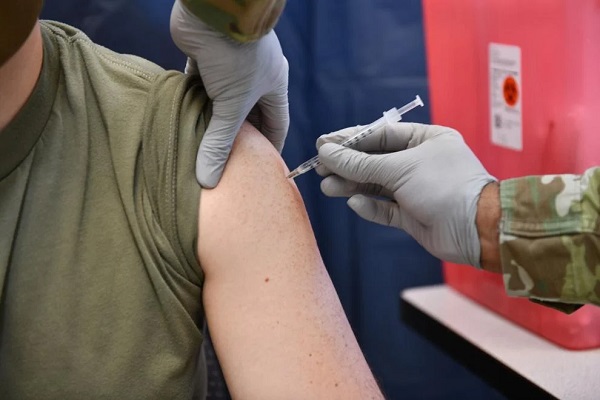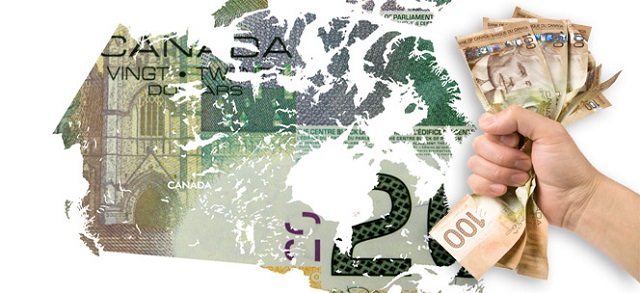Opinion
Inflation Warning: StatsCan Sounds the Alarm
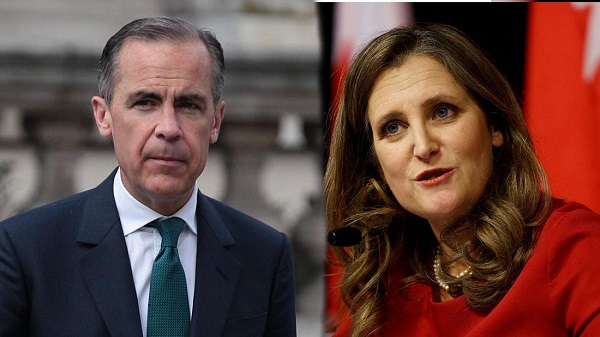
Inflation climbs, energy costs explode, and the government is literally on pause
Picture this: You’re on a plane. The engines are sputtering, the fuel gauge is flashing empty, and the ground is coming up fast. You look to the cockpit for some reassurance, some sign that the people in charge know what they’re doing. But instead, the pilots are gone. They’ve unbuckled their seatbelts, abandoned the controls, and are busy arguing over which one of them gets to be in charge next—because, you know, that’s the real priority right now.
They aren’t governing. They aren’t fixing the problems. They’re trying to save their own political skins while the country burns.
This morning’s Consumer Price Index (CPI) report tells us exactly what’s coming. Inflation is 1.9% year-over-year, and while that number seems stable, it’s a mirage—because once you strip away the government’s temporary tax gimmicks, what’s underneath is an economy about to collapse.
And just when you thought it couldn’t get worse, Trudeau is about to make it worse.
Let’s start with energy, because that’s where the pain begins. Gasoline prices are up 8.6%, natural gas is up 4.8%, and in Manitoba, gas prices just skyrocketed by a staggering 25.9% thanks to a reintroduced gas tax. That’s before Trump’s looming 25% tariff threat, which would send fuel costs spiraling even higher. This isn’t just bad economic policy—it’s a full-blown attack on the working class. Every trucker, every factory worker, every farmer in this country is about to get walloped by higher costs.
And what is Carney’s Liberal Party’s brilliant plan? Another carbon tax hike.
That’s right. While millions of Canadians struggle to afford gas, heating, and food, Trudeau is jacking up the carbon tax—again—on April 1st. That’s not a joke, that’s not speculation, that’s a fact. On that day, the carbon tax will increase to $80 per tonne, driving up gas prices by another 17 cents per liter. Heating your home? Get ready to pay even more. Running a small business? Good luck.
And if you think you caught a break on food prices, think again. The only reason restaurant meals were down 5.1% year-over-year was because of Trudeau’s temporary GST/HST tax cut—which expires in just a few days. Once it’s gone, the illusion of affordability disappears, and food prices will snap back up. Meanwhile, the housing market is still a disaster. Mortgage interest costs jumped 10.2%, rent is up 6.3%, property taxes are rising, and Trudeau is shoving half a million more immigrants into the housing market every year, making it even worse.
And here’s where it gets really ugly. Donald Trump—the current U.S. president—has made it very clear that he’s prepared to slap a 25% tariff on Canadian goods, with a 10% tariff on Canadian energy. What happens then?
- Canadian oil becomes more expensive to export—which means less investment, fewer jobs, and higher energy prices at home.
- Manufacturing takes a direct hit—cars, steel, lumber, and agriculture all get more expensive to sell to our biggest trading partner.
- The Canadian dollar weakens, making everything from imported food to electronics even more costly.
And what is the Trudeau government doing in response?
Nothing. No plan. No strategy. No action. Because they can’t take action. They’ve abandoned ship. They aren’t focused on inflation, trade, or economic survival. They’re focused on themselves.
Trudeau, Mark Carney, Chrystia Freeland, and Karina Gould are on a campaign tour—not for the country, but for the Liberal Party. They’ve literally shut down Parliament—paused democracy itself—so they can focus on their leadership race. Instead of standing before Canadians and explaining how they’re going to stop this economic collapse, they’re off debating amongst themselves over who gets the keys to the sinking ship.
And make no mistake—this isn’t leadership. It’s self-preservation.
Oh sure, they’ll go on CBC and CTV, they’ll look into the camera, nod solemnly, and say they’re “deeply concerned” about affordability. They’ll talk about how they “have a plan” to help Canadians. But let’s be absolutely clear: They cannot execute anything. They can’t pass legislation. They can’t provide relief. They have shut down the government.
The only thing they can do right now is talk. And if they manage to fool enough people into electing them again? Then the real pain begins. More deficits. More immigration. More taxes. The same disastrous Liberal policies that got us here in the first place—only this time, there won’t be a GST holiday to hide the damage.
It’s not just a disgrace. It’s a joke—a sick, insulting joke at the expense of every hardworking Canadian trying to keep their head above water. This country is not some Liberal playground, a sandbox for political elites to bicker over power while the economy crumbles.
And yet, they want you to believe they care about affordability.
Really? Affordability? Because here’s what’s actually happening: The temporary GST break is gone, energy prices are about to skyrocket, and come April 1st, your gas bill goes up again—all thanks to yet another carbon tax hike, courtesy of Mark Carney. That’s right. The man Liberals are grooming to be their next leader is the same unelected banker who cooked up this disaster in the first place.
And now? He gets to inherit it.
So maybe, in some twisted way, this is justice. Maybe it’s actually a blessing that Parliament is prorogued, because it means the Liberals can’t pass any more destructive policies before they’re inevitably thrown out of office. Let Carney take the blame. Let him defend his own brainchild as Canadians get walloped with higher gas prices, higher heating costs, and higher grocery bills.
This is the Liberal legacy: crippling taxes, runaway inflation, and a government too self-absorbed to care. And they have the audacity—the absolute gall—to tell you they’re the ones who will fix it?
Enough. No more distractions. No more backroom power grabs.
Call the election. Face the people. Let Canada decide its future.
Invite your friends and earn rewards
2025 Federal Election
AI-Driven Election Interference from China, Russia, and Iran Expected, Canadian Security Officials Warn
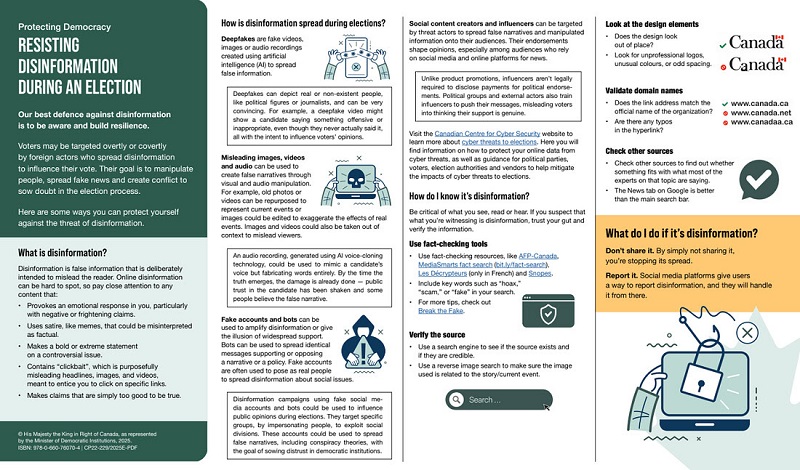
 Sam Cooper
Sam Cooper
Canada’s election monitoring agency is warning that foreign powers, led by the People’s Republic of China, are expected to target Canadian politicians and political parties in the coming weeks using increasingly convincing AI-generated cyberattacks—part of a broad set of malign strategies that could be impacting the 2025 federal election.
The warning came Monday from the Security and Intelligence Threats to Elections (SITE) Task Force, whose officials detailed how foreign state actors, including China, Russia, and Iran, are likely to use so-called “hack-and-leak” operations, generative AI, and social engineering to undermine confidence in Canada’s democratic process.
“Canadian politicians and political parties are likely to be targeted by threat actors attempting to hack into their systems, steal information, and leak that information,” said an official from the Canadian Centre for Cyber Security, a branch of the Communications Security Establishment. “We assess that AI is making social engineering attacks more personalized, pervasive, and harder to detect.”
Officials cited a 2024 U.S. Department of Justice indictment that charged Iranian-linked cyber actors with stealing and leaking campaign material belonging to U.S. political figures, including to rival campaigns. The case, SITE said, was emblematic of an evolving threat model now being deployed globally.
“Increasingly, nation states are incorporating AI into their cyber operations,” SITE warned. “Generative AI tools enable cyber threat actors to create realistic audio and video content impersonating trusted individuals or deepfakes.”
These tools, SITE added, are being used to craft emails that mimic natural human writing, using convincing grammar and tone to fool even seasoned professionals—including campaign staff, journalists, and elected officials.
SITE said that the cyber programs of China, Russia, and Iran represent the greatest strategic cyber threats to Canadian democracy during the current election. Among them, the PRC was flagged as the most persistent in targeting Canadian political figures, public officials, and institutions.
“The PRC regularly targets Canadian government networks and public officials to acquire information that will advance its strategic economic and diplomatic interests,” an official said. “This information is likely also used to support the PRC’s malign influence and interference activities against Canada’s democratic processes.”
SITE linked these activities to broader campaigns of transnational repression. Chinese cyber actors have been publicly tied to operations targeting Uyghur activists in Canada, as well as journalists and dissidents from Hong Kong and Taiwan. The tactics include spyware, phishing campaigns, and digital tracking.
“PRC actors very likely facilitate transnational repression by monitoring and harassing these groups online,” an official added, noting that Beijing has labeled Uyghurs, Falun Gong practitioners, Tibetans, and pro-democracy advocates among its so-called ‘five poisons.’
Russia and pro-Russian non-state actors were described as the most aggressive actors globally over the past two years in targeting elections, using cyberattacks and information warfare to influence outcomes and undermine faith in democratic institutions.
SITE officials emphasized that the task force is actively monitoring signals intelligence, cyber intrusion attempts, and online manipulation in real-time — and will issue public alerts if they identify specific incidents linked to foreign actors.
But the challenge, they said, is that these operations increasingly blend foreign state capabilities with domestic narratives and influencers, making detection and attribution more difficult.
“The environment is rapidly evolving,” the official concluded. “We are asking everyone — from parties to voters — to be vigilant in the face of increasingly deceptive and technologically sophisticated foreign interference.”
Two weeks ago, Canada’s Security and Intelligence Threats to Elections (SITE) Task Force identified a sophisticated PRC information campaign targeting Chinese-language social media in Canada. On March 10 and March 25, the WeChat account Youli-Youmian, linked to Chinese Communist Party propaganda efforts, shared widely amplified posts portraying Mark Carney in a highly favorable light.
One post, titled “The US encounters a ‘tough guy’ Prime Minister,” framed Carney as standing up to Donald Trump’s tariff threats.
At the SITE briefing Monday, The Bureau questioned whether the task force would investigate the Carney campaign’s “ButtonGate” scandal as potential domestic election interference—especially given the operation echoed a PRC disinformation playbook from 2021 that falsely depicted the Conservatives as Trump-style extremists. The question also raised whether SITE had the capacity to examine any crossover between this Liberal narrative and a broader foreign campaign.
A SITE spokesperson replied cautiously: “National security agencies take any attempt to undermine our democracy really seriously… Not all disinformation is foreign-backed… but SITE is committed to informing Canadians when emerging issues can be linked to foreign state actors.”
Alongside its public briefing Monday, the SITE Task Force released a visual guide warning Canadians about how disinformation spreads during elections.
The schematic emphasizes vigilance, encouraging Canadians to scrutinize domain names, design inconsistencies, and suspicious endorsements. It also urges users to verify sources, use fact-checking tools, and avoid sharing unverified content.
The Bureau is a reader-supported publication.
To receive new posts and support my work, consider becoming a free or paid subscriber.
Invite your friends and earn rewards
Bjorn Lomborg
Global Warming Policies Hurt the Poor

From the Fraser Institute
Had prices been kept at the same level, an average family of four would be spending £1,882 on electricity. Instead, that family now pays £5,425 per year. The average UK person now consumes just over 10 kWh per day—a low point in consumption not seen since the 1960s.
We are often told by climate campaigners that climate change is especially pernicious because its effects over coming decades will disproportionately affect the poorest people in Canada and the world. Unfortunately, they miss that climate policies are directly hurting the poor right now.
More energy leads to better, healthier, longer lives. Less energy means fewer opportunities. Climate policies demand we pay more for less reliable energy. The impact is greater if you’re poorer: the wealthy might grumble about higher costs but can generally absorb them; the poor are forced to cut back.
For evidence, look to the United Kingdom which has led the world on stiff climate policies and net zero promises for some two decades, sustained by successive governments: its inflation-adjusted electricity price, weighted across households and industry, has tripled from 2003 to 2023, mostly because of climate policies. The total, annual UK electricity bill is now $CAD160 billion, which is $CAD105 billion more than if prices in real terms had stayed unchanged since 2003. This unnecessary increase is so costly that it is twice the entire cost that the UK spends on elementary education. Had prices been kept at the same level, an average family of four would be spending £1,882 on electricity. Instead, that family now pays £5,425 per year.
Over that time, the richest one per cent absorbed the costs and even managed to increase their consumption. But the poorest fifth of UK households saw their electricity consumption decline by a massive one-third.
The effects of climate policies mean the UK can afford less power. The average UK person now consumes just over 10 kWh per day—a low point in consumption not seen since the 1960s. While global individual electricity consumption is steadily increasing, the energy available to an average Brit is sharply decreasing.
Climate policies hurt the poor even in energy-abundant countries like Canada and the United States. Universally, poor people in well-off countries use much more of their limited budgets paying for electricity and heating. US low-income consumers spend three-times more on electricity as a percentage of their total spending than high-income consumers. It’s easy to understand why the elites have no problem supporting electricity or gas price hikes—they can easily afford them.
As mentioned in the article on cold and heat deaths, high energy prices literally kill people—and this is especially true for the poor. Cold homes are one of the leading causes of deaths in winter through strokes, heart attacks, and respiratory diseases. Researchers looked at the natural experiment that happened in the United States around 2010, when fracking delivered a dramatic reduction in costs of natural gas. The massive increase in availability of natural gas drove down the price of heating. The scientists concluded that every single winter, lower energy prices from fracking save about 12,500 Americans from dying. To put this another way, all else being equal, a reversal and hike in energy prices would kill an additional 12,500 people each year.
As bleak as things are for the poor in rich countries, virtue-signaling climate policy has even farther-reaching impacts on the developing world, where people desperately need more access to the cheap and plentiful energy that previously allowed rich nations to develop. In the poor half of the world, more than two billion people have to cook and keep warm with polluting fuels such as dung and wood. This means their indoor air is so polluted it is equivalent to smoking two packs of cigarettes a day—causing millions of deaths each year.
In Africa, electricity is so scarce that the total electricity available per person is much less than what a single refrigerator in the rich world uses. This hampers industrialization, growth, and opportunity. Case in point: The rich world on average has 650 tractors per 50km2, while the impoverished parts of Africa have just one.
But rich countries like Canada—through restrictions on bilateral aid and contributions to global bodies like the World Bank—refuse to fund anything remotely fossil fuel-related. More and more development and aid money is being diverted to climate change, away from the world’s more pressing challenges.
Canada still gets more than three-quarters of its energy (not just electricity) from fossil fuels. Yet, it blocks poor countries from achieving more energy access, with the naïve suggestion that the poor “skip” to intermittent solar and wind with an unreliability that the rich world does not accept to fulfil its own, much bigger needs.
A large 2021 survey of leaders in low- and middle-income countries shows education, employment, peace and health are at the top of their development priorities, with climate coming 12th out of 16 issues. But wealthy countries refuse to pay attention to what poor countries need, in the name of climate change.
The blinkered pursuit of climate goals blinds politicians in rich countries like Canada to the impacts on the poor, both here and across the world in developing nations. Climate policies that cause higher energy costs and push people toward unreliable energy sources disproportionately burden those least able to bear them.
-
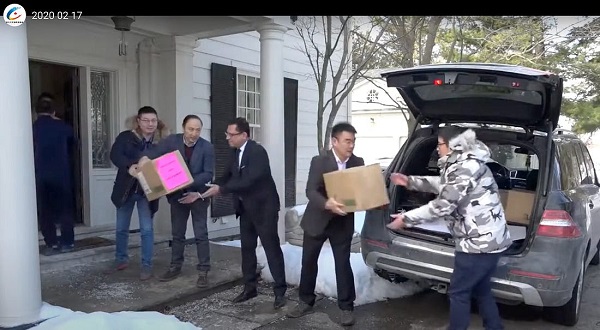
 2025 Federal Election2 days ago
2025 Federal Election2 days agoPPE Videos, CCP Letters Reveal Pandemic Coordination with Liberal Riding Boss and Former JCCC Leader—While Carney Denies Significant Meeting In Campaign
-
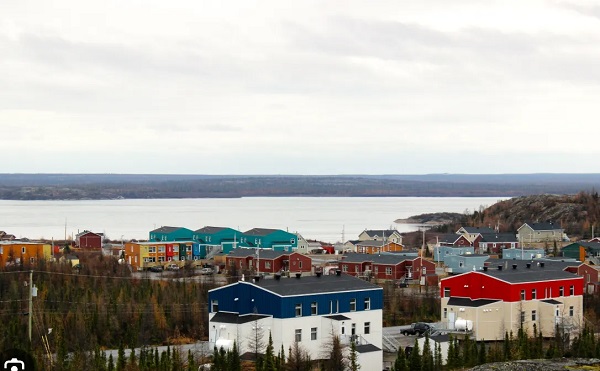
 2025 Federal Election2 days ago
2025 Federal Election2 days agoNo Matter The Winner – My Canada Is Gone
-

 Alberta1 day ago
Alberta1 day agoMade in Alberta! Province makes it easier to support local products with Buy Local program
-

 2025 Federal Election1 day ago
2025 Federal Election1 day agoASK YOURSELF! – Can Canada Endure, or Afford the Economic Stagnation of Carney’s Costly Climate Vision?
-

 2025 Federal Election1 day ago
2025 Federal Election1 day agoCSIS Warned Beijing Would Brand Conservatives as Trumpian. Now Carney’s Campaign Is Doing It.
-

 Alberta2 days ago
Alberta2 days agoProvince to expand services provided by Alberta Sheriffs: New policing option for municipalities
-
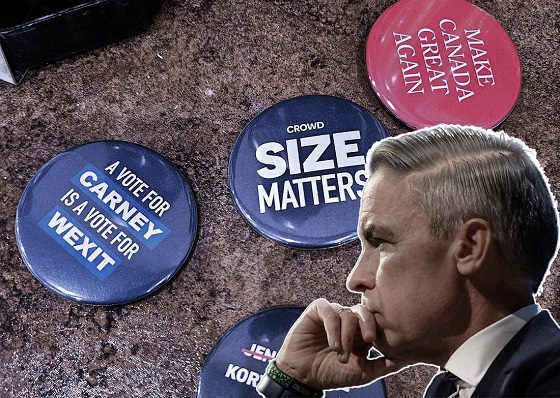
 2025 Federal Election1 day ago
2025 Federal Election1 day agoInside Buttongate: How the Liberal Swamp Tried to Smear the Conservative Movement — and Got Exposed
-
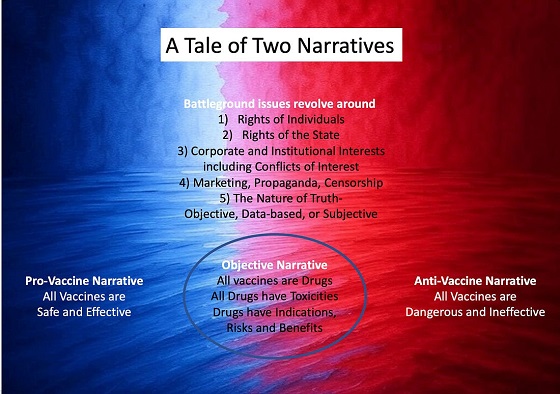
 Dr. Robert Malone23 hours ago
Dr. Robert Malone23 hours agoThe West Texas Measles Outbreak as a Societal and Political Mirror







